
Tucked away in a secluded corner of Reykjavik, along the North Atlantic coastline, the Recycled House is probably the single most unusual site in the entire city. At first glance, this hodgepodge of rusty metal sheets, African masks, creepy scarecrows and every object you can possibly think of, might seem as if it's simply a dumping site of wacky hoarders, and while to large extent it certainly is, there is far more to this place than what meets the eye.
By far the easiest way to get to the Recycled House is walking eastwards along Reykjavik’s coastal esplanade, when shortly after reaching Skolpa Sewage treatment plant you’ll have to turn left to a narrow pathway that ultimately leads to the hidden site.
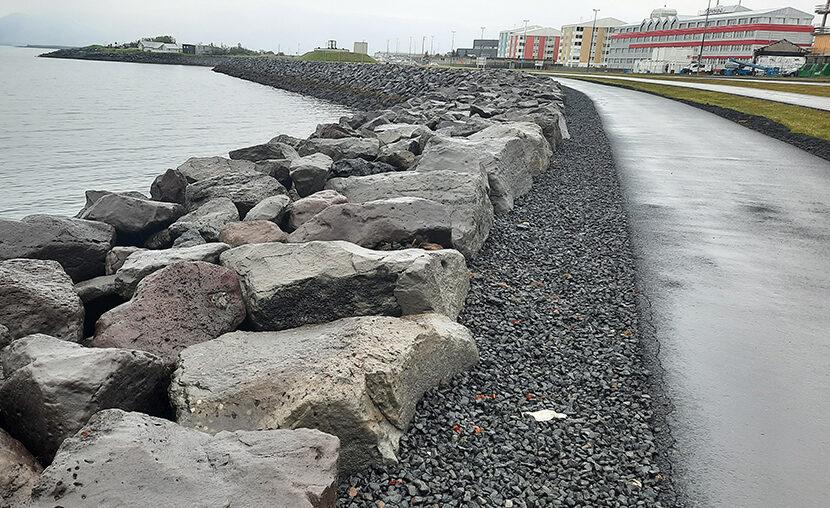
photography by: Omri Westmark
As you step into the premises, you’ll be greeted by eerie figures that loom within the tall grass.

photography by: Omri Westmark
The moment you get closer to the mysterious objects is when you realize you are completely surrounded by an army of creepy scarecrows, made of reused rubbish.
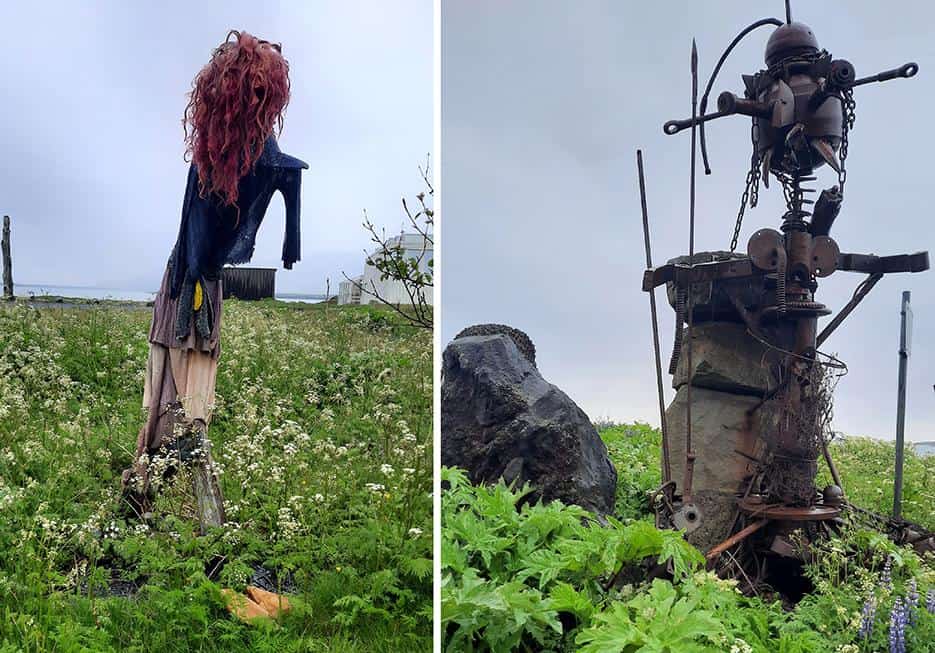
photography by: Omri Westmark
Once you pass the guardian bogeymen, you’ll finally come across the Recycled House. If you wonder what is the story behind this bizarre edifice, it was created by the locally renowned filmmaker Hrafn Gunnlaugsson, who initially purchased the house while he was looking for a workplace to create all sorts of ornaments and objects for his movies.
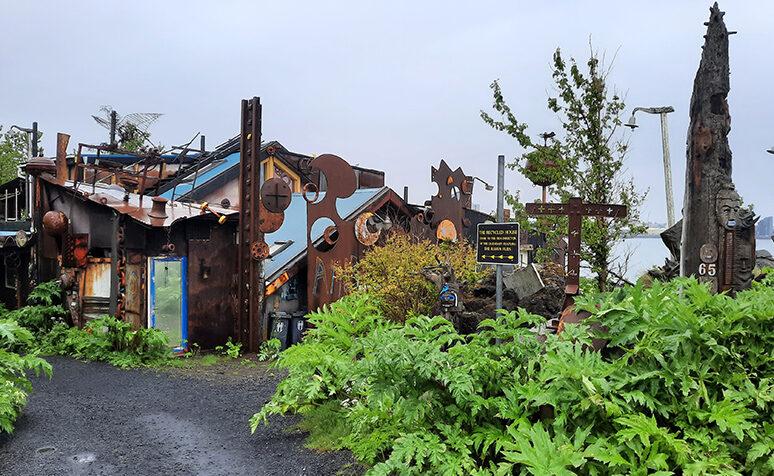
photography by: Omri Westmark
Following a couple of years where he spent much of his time at the place, Gunnlaugsson transformed his studio into an unconventional medley of scrapped metal, timber and other materials, all of which were incorporated as parts of his now redesigned home.
Interestingly, Gunnlaugsson’s career as a filmmaker revolved around the production of Viking movies that were aimed at reshaping public opinion about the medieval Nordic group, ultimately debunking a lot of misconceptions about them. His films were considered by many as provocative and eccentric, and thus Gunnlaugsson’s house should be regarded merely as a different expression of his whimsical work.
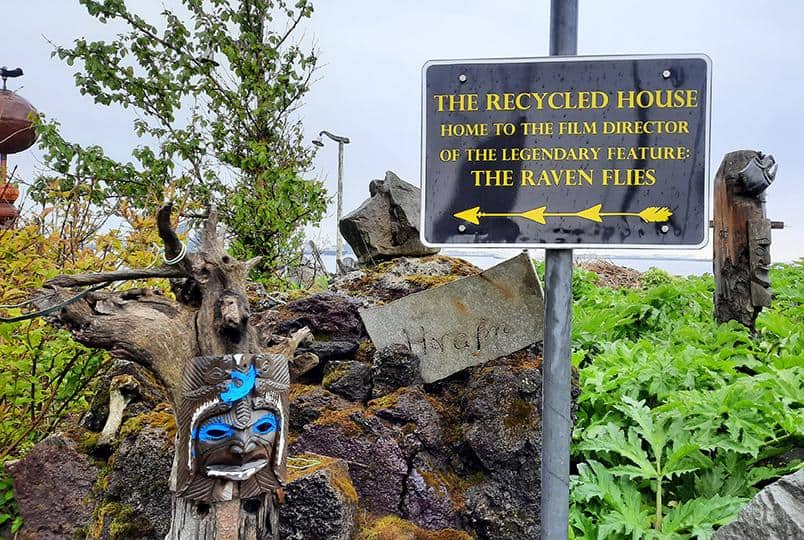
photography by: Omri Westmark
While this House was born by mimicking the building process of a slum, any ornament, object or part of this three-story complex is well-calculated and carefully made.
One might conclude that as the name suggests, the recycled house is solely a provocative environmental project that was intended to raise awareness for a crucial issue, yet the biggest passion behind this atypical project is rather the owner’s obsession to give a new meaning to objects that were deemed unworthy by modern society.

photography by: Omri Westmark
Born in 1948, Gunnlaugsson still lives in this house he toiled so much to create, in fact, if he is around while a curious passerby explores the building and its surroundings, he might cordially invite him for a personal tour as he does in many cases.
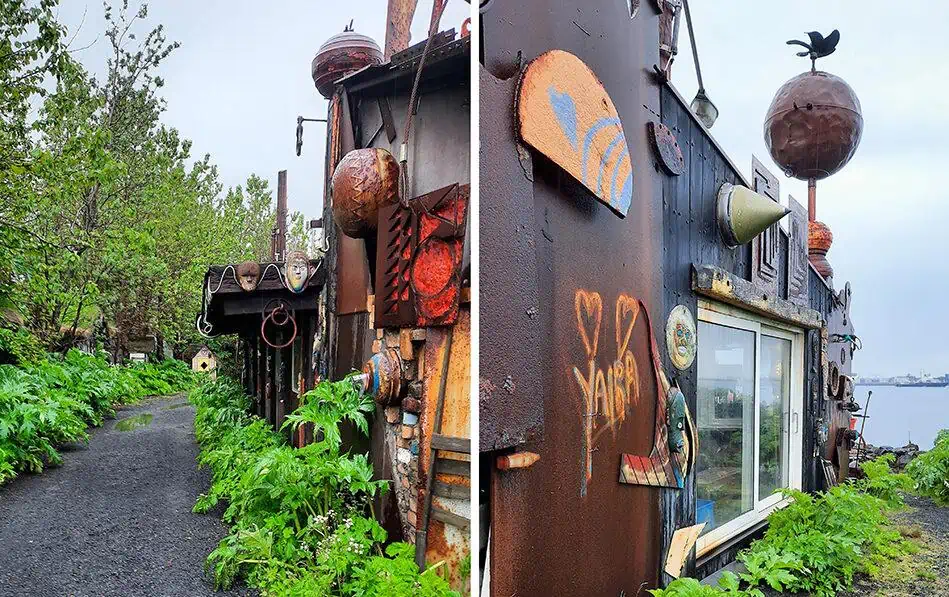
photography by: Omri Westmark
Curiously, some of the works you’ll happen to see around the house haven’t been finished yet, as Gunnlaugsson continuously works on new features and objects every week. The sculptures and ornaments are never fully planned in advance as their progress depends on Gunnlaugsson’s inspiration at any given moment, which apparently tends to be very unpredictable.
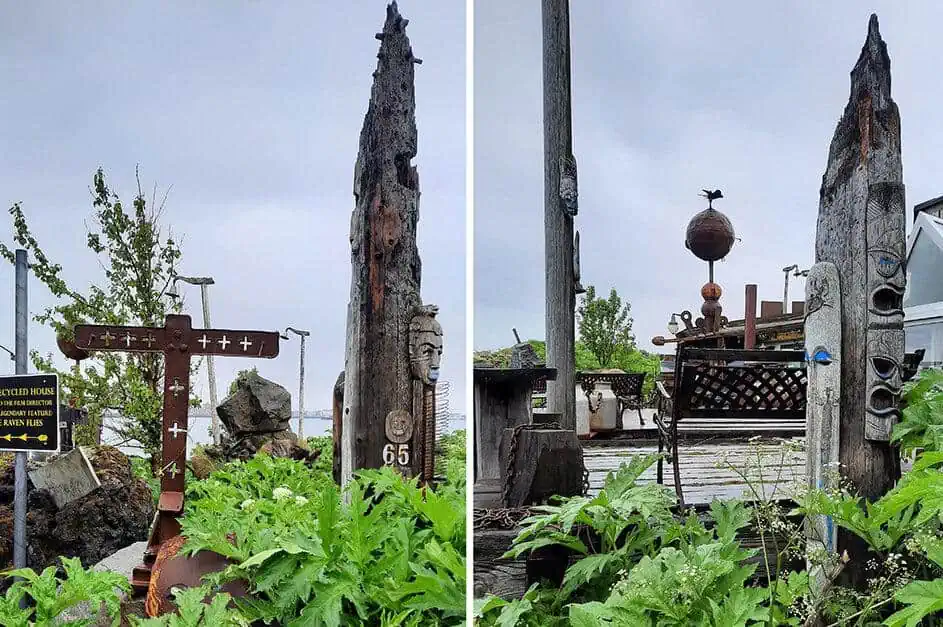
photography by: Omri Westmark
His unorthodox approach can also explain the dissonance between the different constituent parts some sculptures are made of.
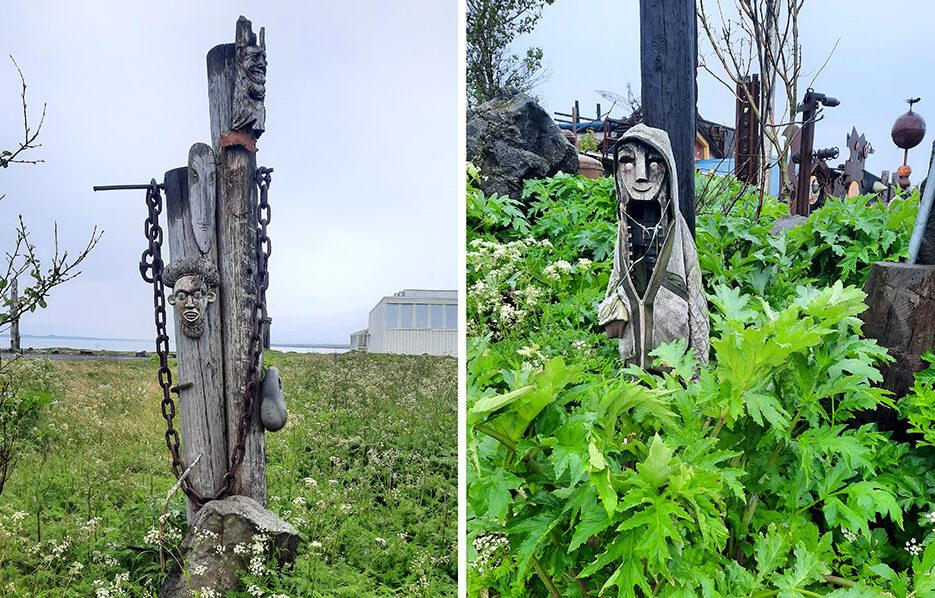
photography by: Omri Westmark
Next to the house is an asphalt pathway that leads to a scenic spot that overlooks Reykjavik oceanfront, marked by a tall cross made of driftwood.
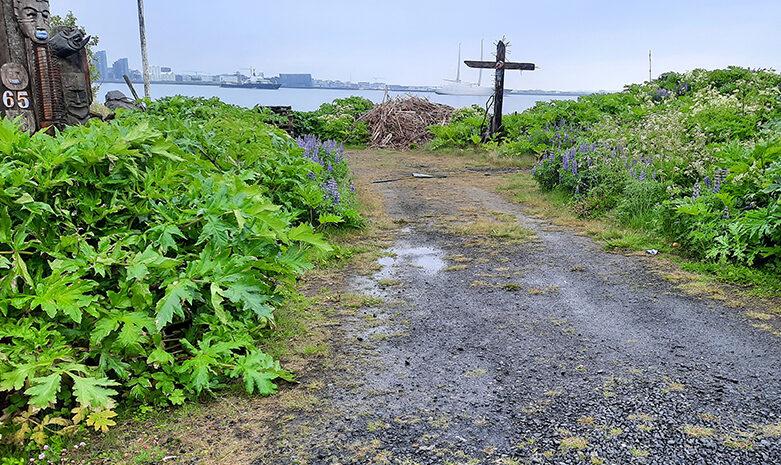
photography by: Omri Westmark
As you get closer, the cross suddenly appears as an unorthodox version of a crucifix, personally interpreted by Gunnlaugsson.

photography by: Omri Westmark
Nestled amid the mossy rocks along the coastline is the scenic spot, which unlike the rest of the complex is pretty mundane, consists of a generic wooden picnic bench.
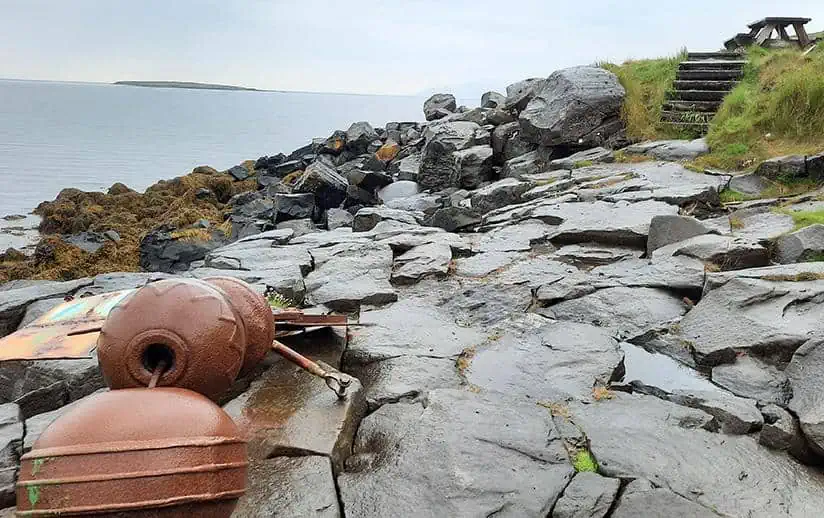
photography by: Omri Westmark
You’ll probably not come across any aquatic animals at the premises, yet a pair of seal-shaped metal sheets will greet you as you descend back to the house.
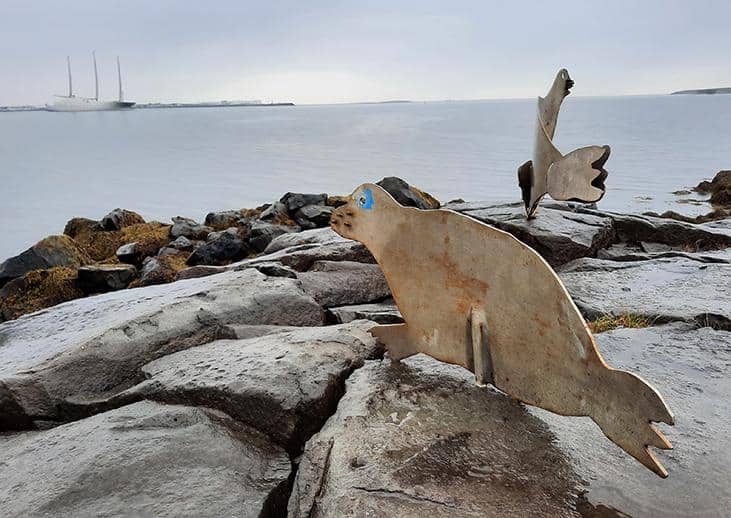
photography by: Omri Westmark
Among the many items strewn across the house’s junkyard is even a disused boat that found its final resting place in front of a pile of rocks.
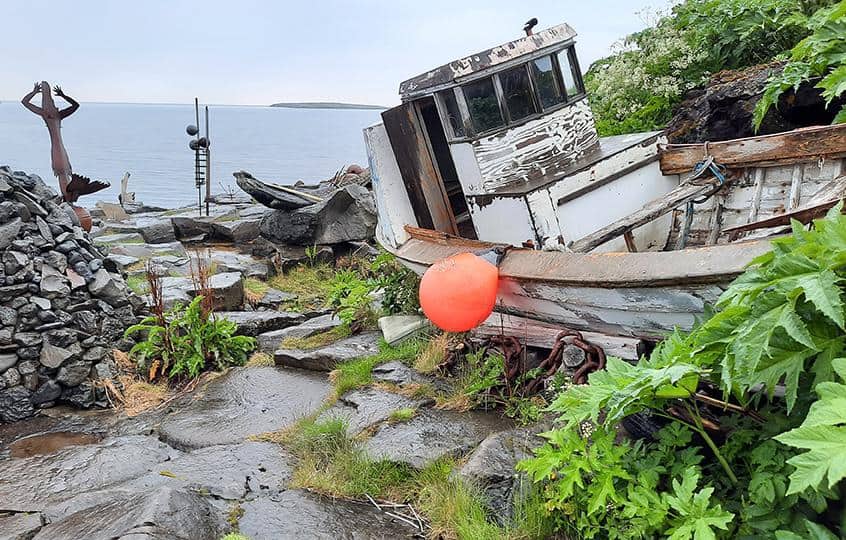
photography by: Omri Westmark
A rusting statue of woman welcomes guests as they head into the main courtyard that directly overlooks the ocean.
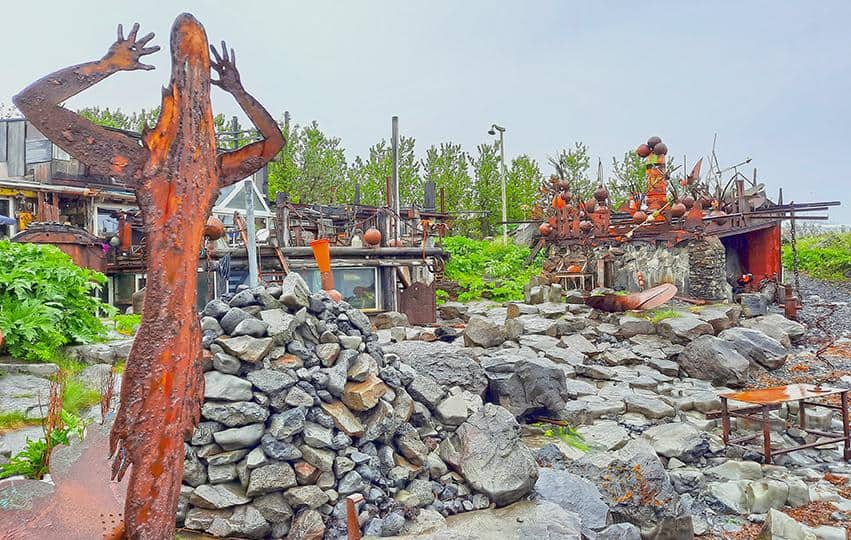
photography by: Omri Westmark
The Recycled House’s frontal façade reveals the complete chaos that rules each and every section of this building, as it’s devoid of any architectural guidelines that resonate with something familiar.
None of the house’s three levels are aligned to each other, resulting in an even bigger cacophony of non-congruent floors.
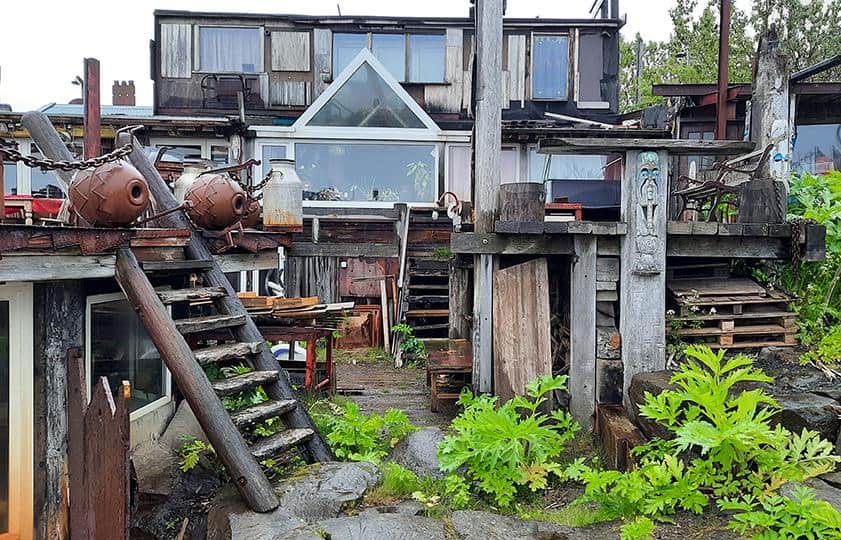
photography by: Omri Westmark
The top floor serves as Gunnlaugsson’s bedroom and shower, whereas the ground floor is mostly allocated for an open-space living room, equipped with a tailor-made wooden furniture.
The basement however occupies a far less ordinary role, as its depth is always changing. According to Gunnlaugsson, Iceland is too small for having enough satisfaction and interest from social interactions with his fellow Icelanders, thus whenever he faces boredom, he simply digs his cellar’s floor for fun.
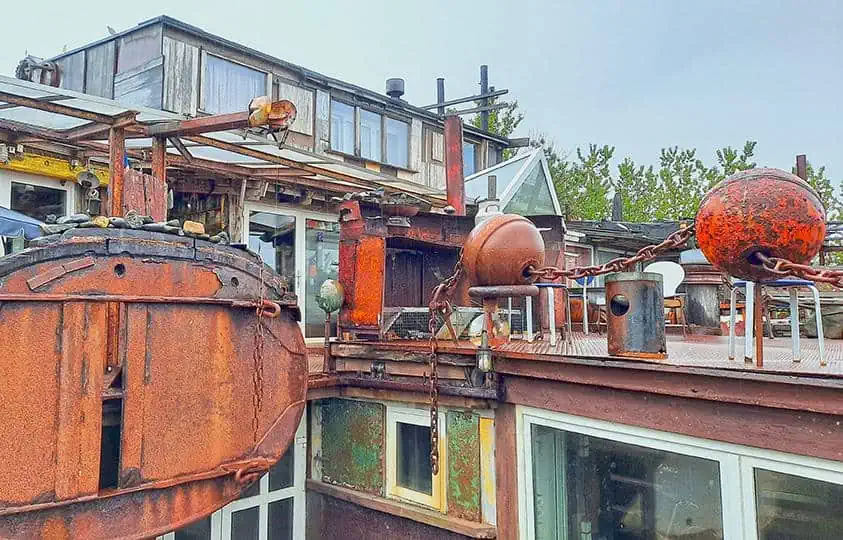
photography by: Omri Westmark
Originally, every metal sheet that was incorporated into the house featured a lustrous hue. However, following an extended period of time where the building was completely exposed to the elements, exceedingly so due to its proximity to the ocean, most of the metallic color was replaced by orange rust which in turn became the place’s most prominent characteristic.
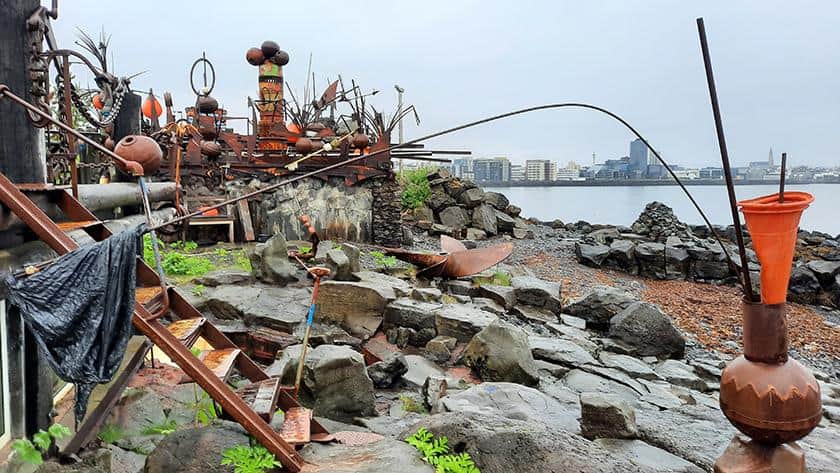
photography by: Omri Westmark
Despite the house’s iconic and unusual appearance, the city council of Reykjavik didn’t embrace Gunnlaugsson’s creativity at all, treating his residence as an eye sore that needs to be removed. Evidently, several years ago, due to a lack of official building permit, a local municipal unit demolished a nearby pond with numerous flamboyant sculptures that Gunnlaugsson meticulously created. If you thought for a moment that the constant threat to his life project bothers him, then think again since he admits he doesn’t really care that after his death the house will be bulldozed.
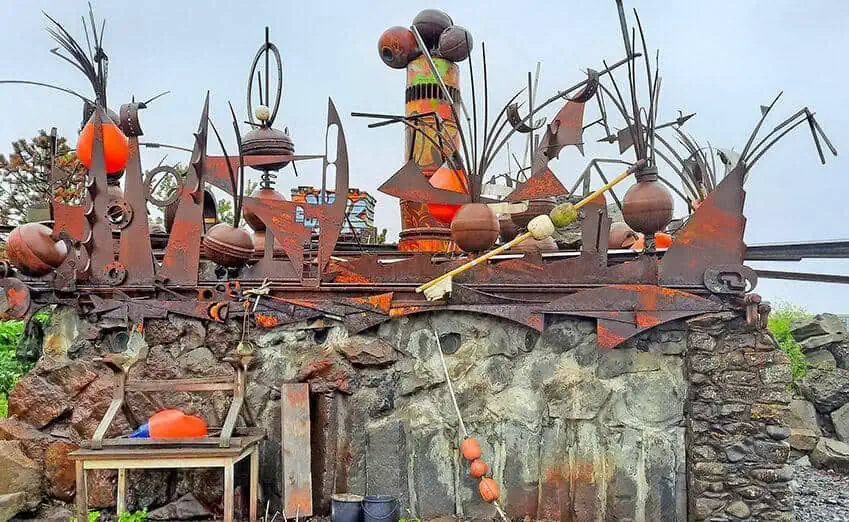
photography by: Omri Westmark
Hanged on walls, staircases and other parts, dozens of tribal African masks that Gunnlaugsson collected throughout the years stare at you no matter where you go, as if they were spiritual guards of the house.
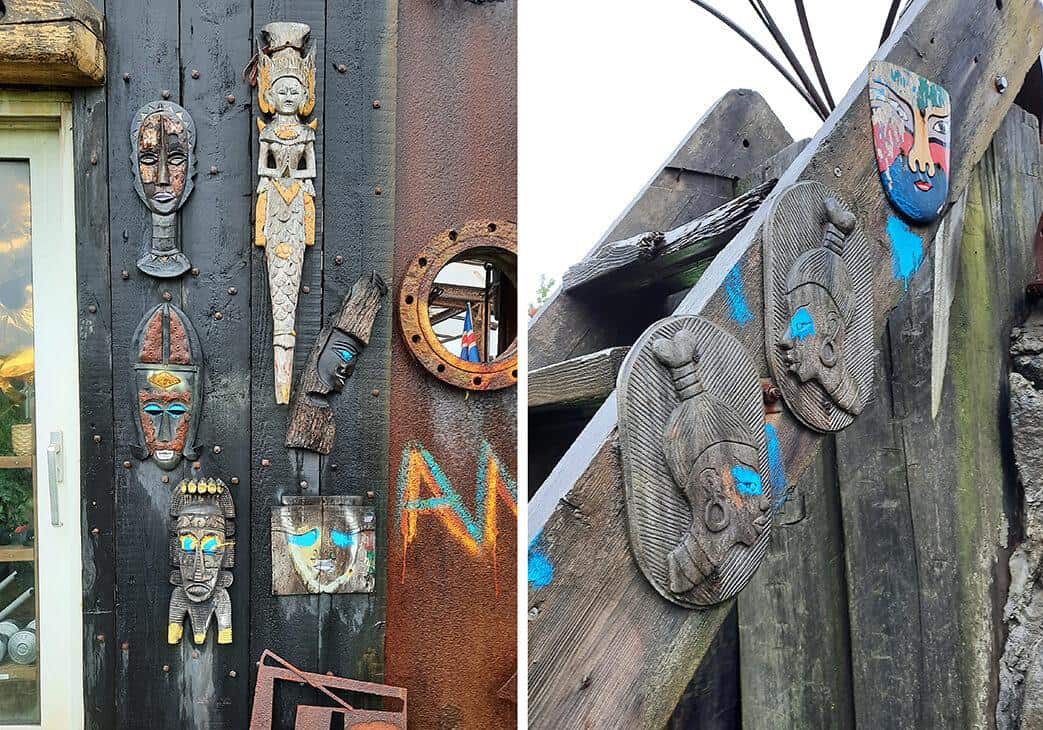
photography by: Omri Westmark
As you surround the house, you’ll soon reach a dense thicket, where several eerily looking totems jut from within the vegetation, marking the land parcel.
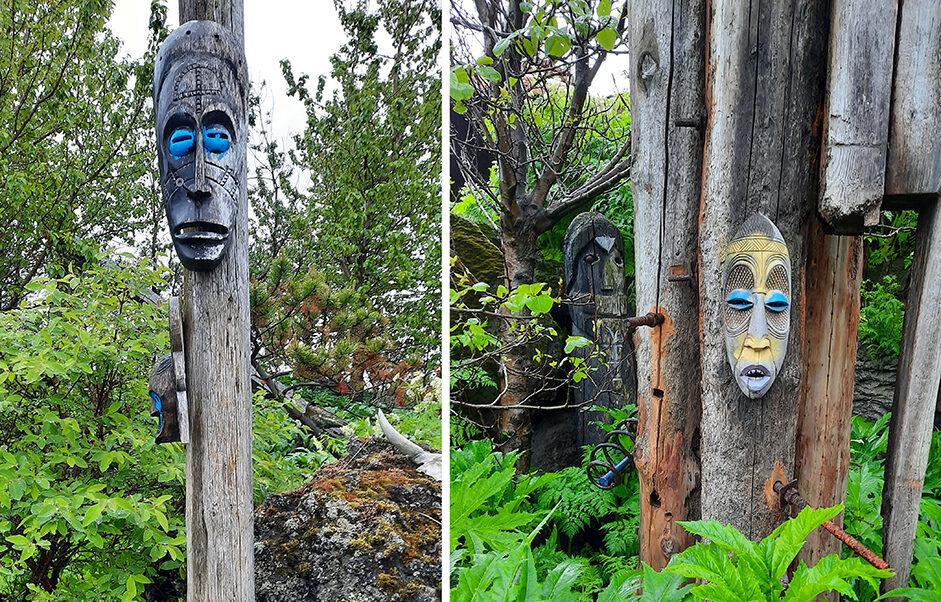
photography by: Omri Westmark
If the scores of African style artifacts prompted any speculation whether this house has something to do with black magic, then you are not alone. Apparently, up until recently Gunnlaugsson accommodated a gypsy woman who practices witchcraft, allocating an entire section of his house for her Voldemortian sorcery.
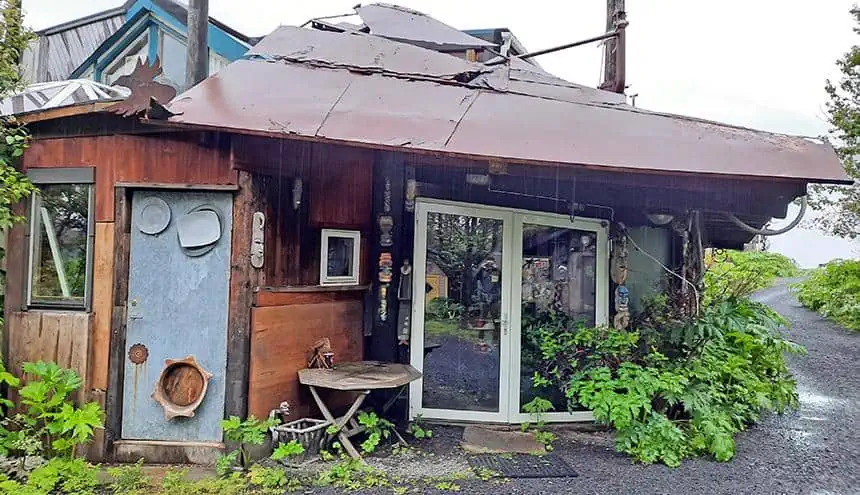
photography by: Omri Westmark
Hilariously, not even a single part of Gunnlaugsson’s house is spared from the outlandish decoration, including a turf-roofed storage unit that is situated along the rear pathway.

photography by: Omri Westmark
Additionally, ambiguous hovels at the backyards that potentially serve as kennels or dovecotes add yet another facet of mystery to the already spooky complex.
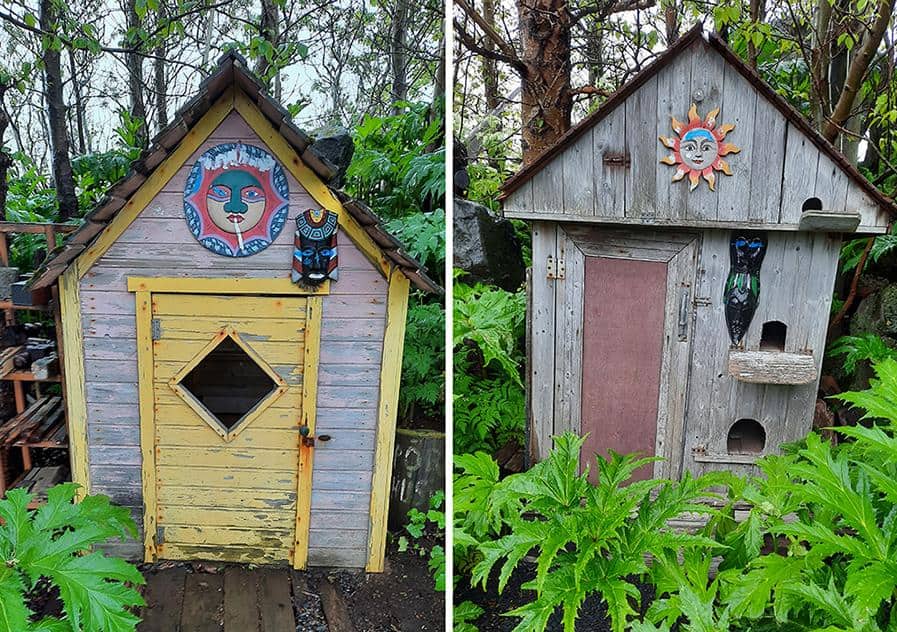
photography by: Omri Westmark
A prominent figure in myriads of Icelandic sagas, Freyja is according to the Nordic tradition the goddess of love, fertility, sex and beauty.
For centuries, Freyja was revered in Iceland, as before the arrival and spread of Christianity the vast majority of Icelanders practiced Paganism.
The Recycled House’s Freyja however seemed more like a cartoonish or satiric version of herself, unsurprisingly when it comes to the personal interpretation of the unconventional filmmaker.
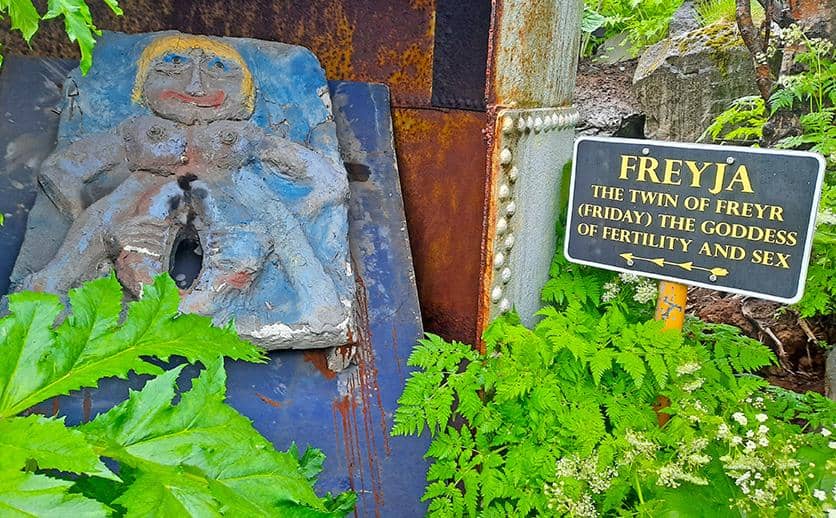
photography by: Omri Westmark
Nestled alongside Freyja is her husband, Óðinn, the king of gods according to the Nordic traditions who is widely associated with war, wisdom, poetry and a host of other things. Standing right next to Gunnlaugsson’s version of Odin is his firstborn son, Thor, the hammer-armed god of lightning, storms, trees and strength who has recently been the source of inspiration behind the fictious figure of Thor in the Marvel’s Avengers film series.
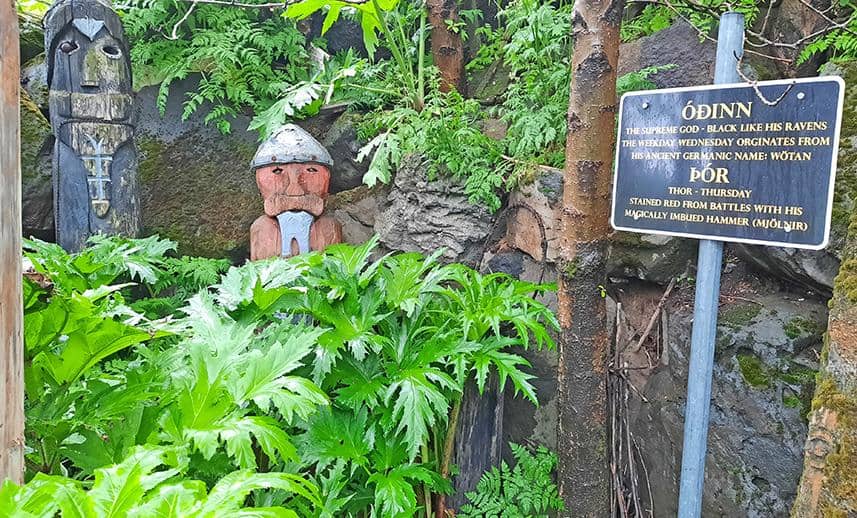
photography by: Omri Westmark